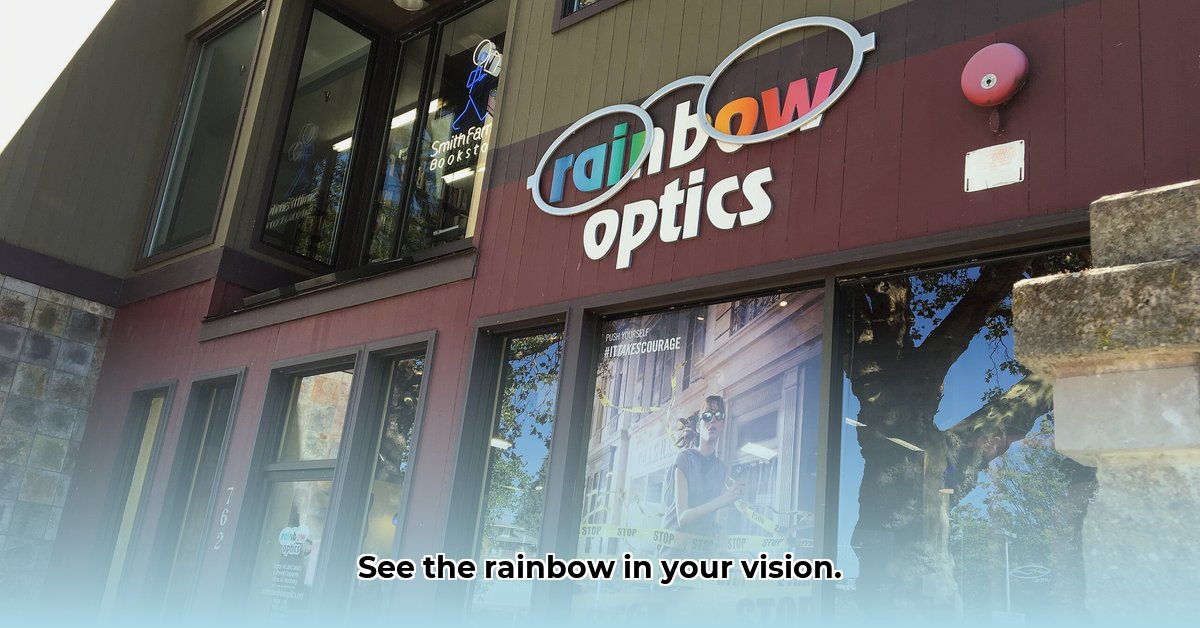
Seeing Beyond the Retina: Advanced Technology and Community Engagement at Rainbow Optics Eugene
Rainbow Optics Eugene, Oregon, is redefining eye care by seamlessly integrating advanced technology with a deeply rooted commitment to community health. This case study examines their innovative approach, analyzing its strengths, weaknesses, and potential for broader impact. The core of their model lies in the utilization of cutting-edge technology like the Zeiss Clarus 500, coupled with proactive community outreach programs designed to ensure equitable access to vital eye care services. For examples of similar community initiatives, see this case study.
Technological Overview: The Zeiss Clarus 500 and Early Disease Detection
Rainbow Optics' utilization of the Zeiss Clarus 500 represents a significant advancement in retinal imaging. This high-definition imaging system provides exceptionally detailed images of the retina (the light-sensitive tissue at the back of the eye), enabling the early detection of various retinal diseases. The Clarus 500's capabilities significantly improve the accuracy and speed of diagnosing conditions such as macular degeneration (a deterioration of the central part of the retina), glaucoma (damage to the optic nerve), and diabetic retinopathy (damage to blood vessels in the retina due to diabetes). Early detection is paramount in these conditions, as early intervention can often prevent or significantly delay vision loss. The high-resolution images allow ophthalmologists to identify subtle changes indicative of disease, often before patients experience noticeable symptoms.
Community Engagement Initiatives: Bridging the Healthcare Gap
Rainbow Optics' commitment extends far beyond technological innovation. Their proactive community engagement initiatives are a cornerstone of their mission. They collaborate closely with several key organizations, including the White Bird Clinic, the Lions Club, Volunteers in Medicine, and the Community Health Centers of Lane County. These partnerships directly address healthcare disparities by providing eye exams and treatments to underserved populations, particularly children and adults who might otherwise lack access to essential eye care. Their outreach programs often target vulnerable communities, actively working to remove financial and logistical barriers to accessing high-quality vision care.
Analysis and Findings: A Need for Quantifiable Data
While Rainbow Optics' dedication to community health is commendable, the absence of comprehensive, quantifiable data presents a significant limitation. While their anecdotal evidence paints a positive picture, lacking specific metrics prevents a full evaluation of their impact. Key questions remain unanswered: How many patients have benefited from early diagnosis using the Zeiss Clarus 500? What is the precise success rate of early detection leading to improved vision outcomes? What is the overall reach of their community outreach programs in terms of patients served and conditions diagnosed? The collection of this data is crucial for demonstrating program effectiveness and securing future funding.
Actionable Recommendations: Building a Data-Driven Model
To strengthen their impact and secure their long-term sustainability, Rainbow Optics should prioritize the development of a robust data collection and analysis system. This involves:
Implementing a comprehensive patient tracking system: This should meticulously document patient demographics, diagnoses (both with and without the Clarus 500), treatment plans, and follow-up care. This detailed tracking will quantitatively illustrate the impact of early detection.
Conducting comparative studies: Comparing the diagnostic accuracy of the Zeiss Clarus 500 against other diagnostic methods will provide crucial data on its effectiveness.
Tracking community outreach program participation and outcomes: Collecting data on the number of individuals screened, diagnosed, and treated through each outreach program will demonstrate the scope and effectiveness of their efforts.
Utilizing feedback mechanisms: Collecting patient feedback through surveys and focus groups will provide valuable qualitative data on the program's impact and areas for improvement.
Conclusion: A Model for Replicable Success
Rainbow Optics Eugene demonstrates a powerful model for integrating advanced technology with compassionate community engagement. However, the absence of comprehensive data limits a full assessment of their achievements. By implementing the recommended data collection and analysis strategies, Rainbow Optics can transform their impactful work into a data-driven success story, providing a model that can be replicated in other communities facing similar healthcare challenges. The future of their vital work depends on translating their commitment into measurable, demonstrable improvements in community eye health.
Recommendations for Further Research
Future research could focus on comparative studies evaluating the cost-effectiveness of early detection programs utilizing the Zeiss Clarus 500. Additional research exploring the long-term vision outcomes of patients diagnosed and treated through Rainbow Optics' programs would further solidify the impact of their work. Finally, a broad study analyzing the replicability of their model in diverse community settings would provide valuable insights for broader implementation across healthcare systems.